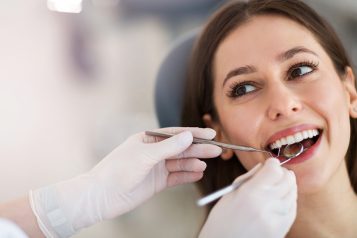Dr. Behrooz A. Torkian is a Facial Plastic and Reconstructive Surgeon dual board certified by the American Board of Facial Plastic and Reconstructive Surgery (ABFPRS). He is a member of the American Academy of Facial Plastic and Reconstructive Surgery (AAFPRS) and focuses his practice exclusively on the face and nose. Haute Beauty sits down with Dr. Torkian to learn more about the ear pinning procedure otherwise known as an Otoplasty.
 Photo Credit: Shutterstock
Photo Credit: Shutterstock
HB: What is Otoplasty?
Otoplasty is the medical term for "ear pinning". It is a surgical procedure that can be done with local anesthesia, twilight anesthesia, or general anesthesia for the proper candidates. The procedure is focused improving the appearance of the protruding ear, to allow for a more pleasing and balanced aesthetic result. It is performed through incisions behind the ear that are hidden in the crease behind the ear, and remain invisible. The surgery allows for correction of ear protrusion as well as the under-developed or flattened creases that can occur in people with prominent ears.
HB: Are there alternatives to surgery?
There is really no alternative procedure to an otoplasty, but there are different methods by which to perform the procedure. The methods that I prefer use stitches placed in the cartilage from the incision behind the ear that help to reshape the cartilage. The sutures may be permanent or absorbable and temporary, but most people will require a combination of the two in order to achieve their desired results.
HB: Who is a good candidate?
A typical candidate for otoplasty surgery can vary. In general, the problem is noticed and obvious shortly after birth, but does not usually become a problem until children are in school. This is where other children's comments may affect the self-esteem of the child, and result in medical consultation. The next stage of life in which the issue of prominent ears becomes apparent is in young-adulthood. In this age group, patients are generally bothered by the appearance of their ears when they have their hair back in a ponytail in women, or just after haircuts in men. If in good health, patients of both age categories can be good candidates for otoplasty to restore confidence in their facial balance and proportions.
HB: How does an Otoplasty work?
Incisions behind the ear allow access to the cartilage framework of the ear. Sutures are then placed to reshape the poorly formed creases of the ear, and pin the ears back to a flatter position against the head. The incisions heal well and do not show in all cases.
 Photo Credit: Shutterstock
Photo Credit: Shutterstock
HB: What does recovery look like?
Recovery is generally limited to one week with a bandage on the ears to prevent blood clot formation, and injury to the freshly operated ears. An additional week of limited exercise, weight lifting precautions are required. There may also be slight bruising in the upper neck and the area behind the ears. Patients are encouraged to wear an "ace" bandage or soft, adjustable headband to keep the ears protected while sleeping.
For more information, visit Dr. Behrooz Torkian's social media:





















